Here I’ll provide you a list of best hydroponic herbs for your indoor garden. Because people often ask me a question: what are the best herbs for hydroponics? My answer is always the same, i.e. the herbs that you use very often in your kitchen.
Hydroponics in gardening has taken a futuristic leap and has helped the urban gardeners to grow their own herbs even in their limited kitchen space in a soil-less environment.
Hydroponic herb gardens can be set up on kitchen counters, balconies, or any preferred well-lit area, as long as there’s access to power to install the necessary equipment. This accessible method of gardening allows you to harvest fresh herbs at arm’s length year-round. You can use the aroma of Basil to elevate the flavor of your pasta or a sprig of rosemary transforming a simple roast into a culinary delight. Explore the herb of your choice in our list.
Whether you plan to grow hydroponic herbs in a hydroponic system or using simple DIY techniques, it all depends on your budget. However, hydroponic systems are efficient in their water usage and open up possibilities for the enthusiasts..
10 Best Herbs for Hydroponics: Hydroponic Herb Garden: Criteria for Selection
Innovation in gardening has led to an explosion of possible herbs to grow hydroponically. Some are hardy, needing less maintenance and thriving even in suboptimal conditions. Others are finicky and need the perfect environment to prosper. For an herb to make it onto our top ten list, it had to meet certain criteria:
Growth Rate:
We looked for herbs that grow quickly, so you can enjoy the fruits of your labor sooner rather than later.
Yield:
A higher yield is essential, especially if you’re limited on space.
Flavor and Aroma:
Your herbs should be rich in the qualities that make them a prized possession in your kitchen.
Adaptability:
Herbs that can tolerate variations in temperature, light, and pH are easier to maintain.
Space Economy:
Given that most of us don’t have unlimited space, plants that are compact or can be trained easily got an extra nod.
Health Benefits:
We considered the herbs that offer substantial health-boosting properties.
10 Best Herbs for Hydroponics:
Each of these ten herbs brings something unique to the table and qualifies to be a staple in any hydroponic garden, large or small.
1. Basil: Ocimum basilicum
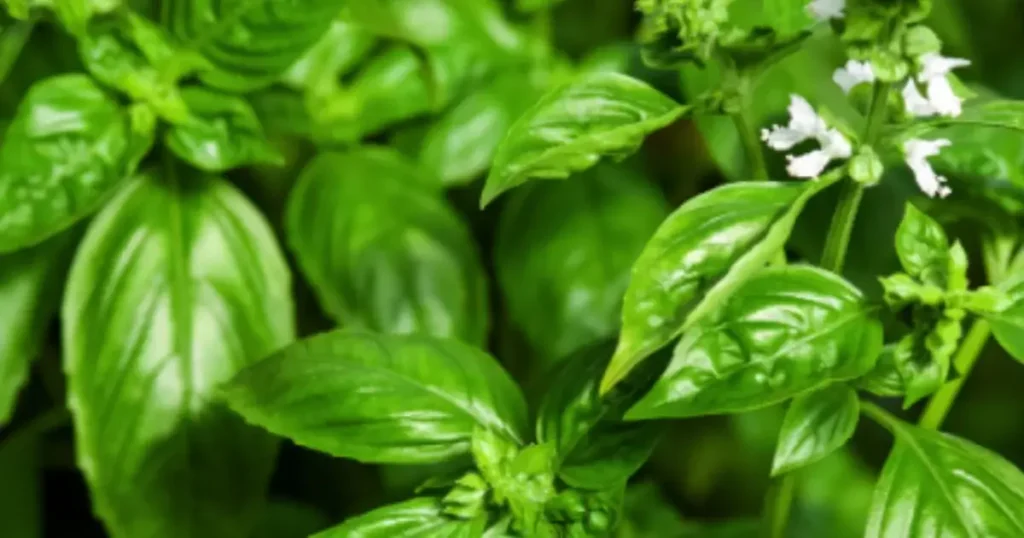
Description: The royal of all herbs, basil reigns with its sweet, slightly peppery flavor. Its leaves vary in color from deep green to purple, making it a delightful visual addition to your garden. Basil is often associated with Italian cuisine but finds its way into dishes worldwide.
Growth and Harvest: Basil is renowned for its rapid growth, often reaching mature stage in just 3 to 4 weeks. Regular harvesting promotes bushier growth and can be done by removing the top few leaves from each stem.
Flavor and Aroma: Basil offers a strong, pungent aroma coupled with a sweet, savory flavor profile, hinting at tones of anise and sweetness.
Adaptability: Basil prefers warmth and bright light but can adapt to varying conditions. It’s not a fan of the cold, so keep those temperatures above 70°F (21°C).
Space Economy: Basil is an excellent choice for small gardens. Pinching off growing points can help it occupy less horizontal space.
Health Benefits: Basil is said to have anti-inflammatory and anti-bacterial properties. Its essential oils are thought to aid in digestion and manage anxiety.
2. Mint: Mentha sp
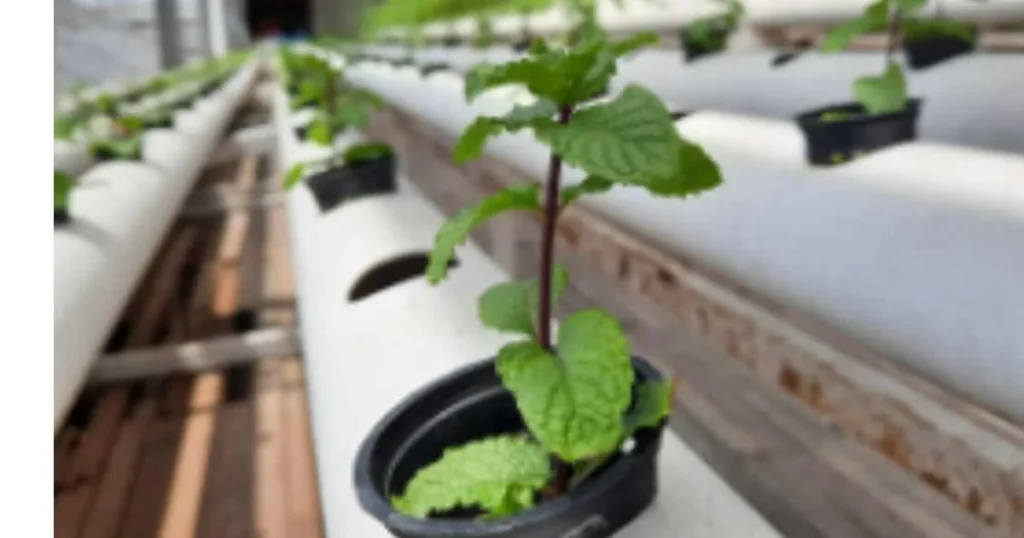
Description: Mint has over a dozen species, each with its unique flavor, but spearmint and peppermint are the most common varieties. Its leaves are a fresh green and sport a vibrant, cool flavor perfect for drinks and desserts.
Growth and Harvest: Mint can grow a bit more slowly than basil but still is ready for harvest within 3-4 weeks. It benefits from regular pruning to keep growth in check.
Flavor and Aroma: Most mints carry a sharply sweet flavor and a cooling sensation due to the presence of menthol. The aroma is invigorating and can almost instantly freshen up a space.
Adaptability: Mint is hardy and tolerant, but be mindful of its invasive nature – it’s best to keep it in separate containers.
Space Economy: Another vertical grower, mint can do well in narrow quarters.
Health Benefits: Mint is a great aid to digestion and can alleviate symptoms of IBS. It’s also refreshing for the breath and the mind.
See also: How to Grow Mint Hydroponically
3. Parsley: Petroselinum crispum
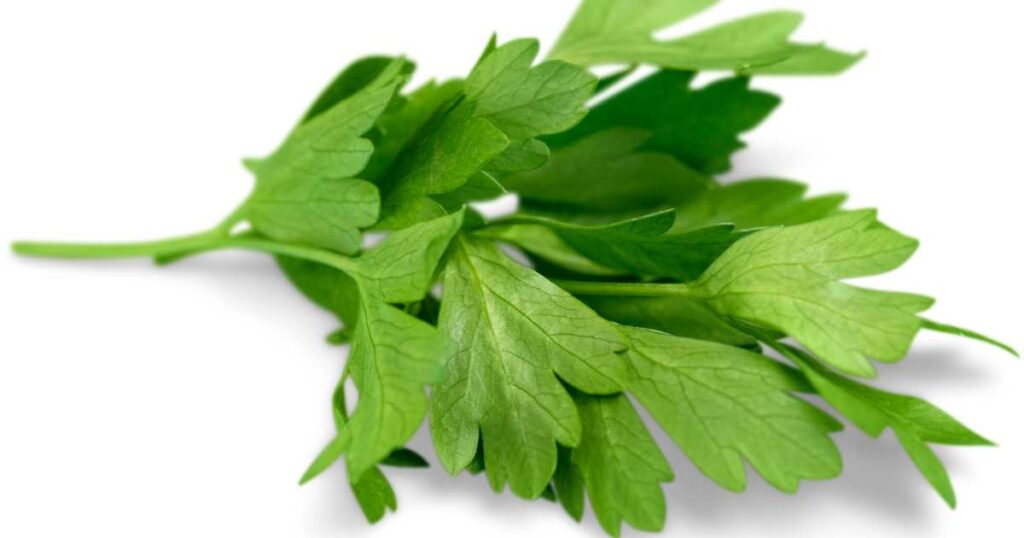
Description: Parsley is the quiet achiever with a mild flavor, yet its role in cooking is undeniable. It can come in two predominant types, curly and Italian, or flat-leafed. Parsley serves as both a garnish and as a taste enhancer in a variety of dishes.
Growth and Harvest: Parsley takes a little longer to mature, usually around 6 to 8 weeks, but offers a constant, steady harvest once it does.
Flavor and Aroma: Its flavor is sometimes described as bitter, but primarily it’s a fresh and green taste. The aroma is subtly fresh.
Adaptability: Parsley is very adaptive and can even handle a bit of shade. It prefers cooler temperatures, so keep the growing area around 65-70°F (18-21°C).
Space Economy: Parsley grows in a rosette form and is a space-efficient plant.
Health Benefits: Parsley is rich in vitamins A and C, and its oil can act as an antibacterial agent, providing protection against tumors and enhancing the immune system.
4. Cilantro: Coriandrum sativum
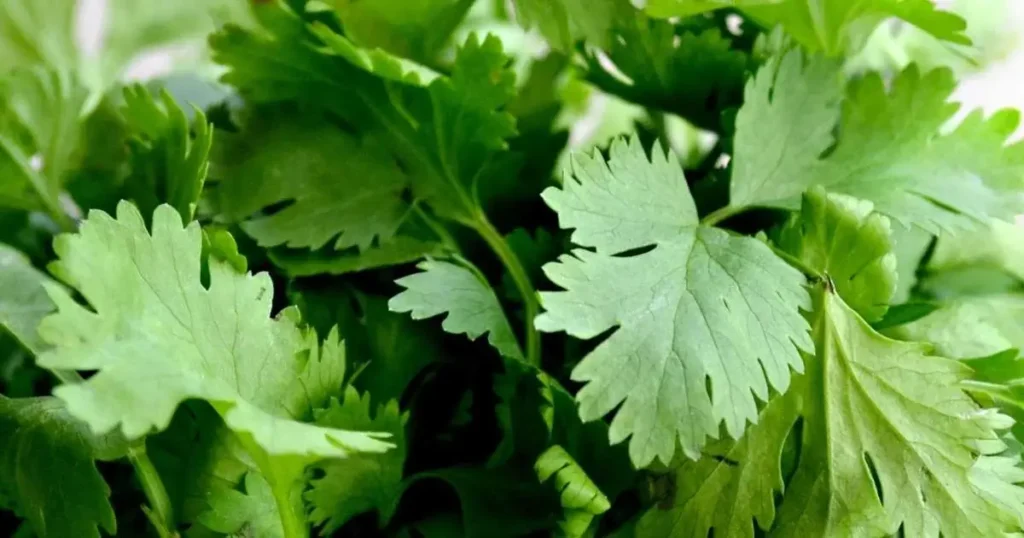
Description: Cilantro, also known as coriander in some parts of the world, is a divisive herb. People either love or absolutely detest its distinctive flavor. Its vibrant green, deeply lobed leaves add character to any dish, especially in Latin and Asian cuisines.
Growth and Harvest: Cilantro grows quickly and can be harvested within 3 to 4 weeks. Don’t overharvest early on, though, as the plant requires some time to establish.
Flavor and Aroma: Its flavor is complex and hard to pinpoint, thanks to the volatile oils in cilantro that give rise to its unique taste. The aroma is equally hard to describe but is often likened to ‘bright’.
Adaptability: Cilantro prefers cooler temperatures and can bolt in hot weather. To extend its life, keep the roots cool with a drip system or similar.
Space Economy: Cilantro is a bit more sprawled, requiring some horizontal space.
Health Benefits: Cilantro contains antioxidants and has been known to help settle the stomach and rid the body of heavy metals.
See also: How to save money with top 5 hydroponic plants in 2024
5. Chives: Allium schoenoprasum
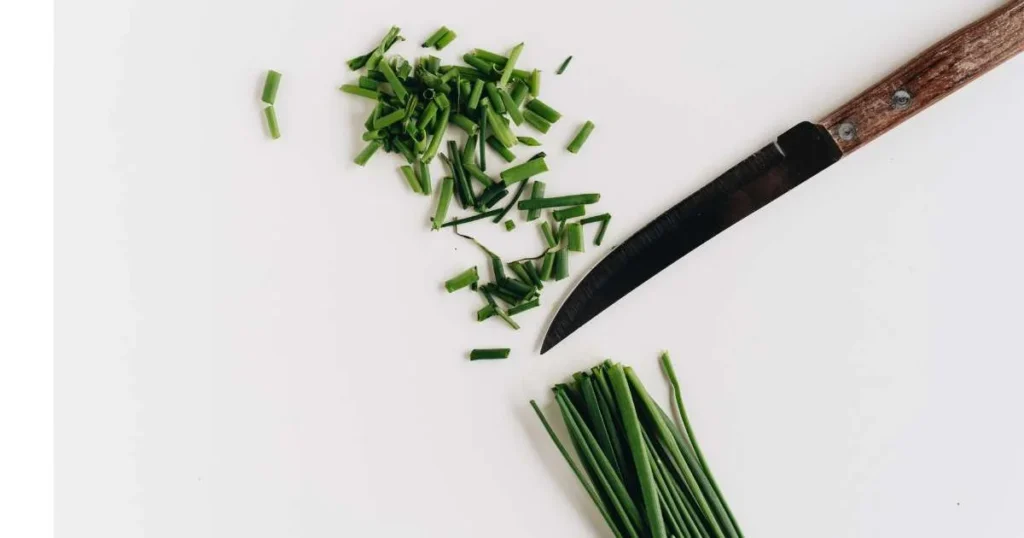
Description: Chives are the smallest member of the onion family, offering slender, tubular leaves that add a mild onion flavor to dishes. The blossoms are edible and are often used as a garnish.
Growth and Harvest: Chives grow steadily and can be harvested within a month but should not be cut back too severely.
Flavor and Aroma: A subtle onion flavor with a mild aroma.
Adaptability: Chives are very hardy and can tolerate a wide range of conditions. They are one of the few perennial herbs suitable for hydroponics.
Space Economy: Chives are quite compact and a great option for small gardens.
Health Benefits: Chives are loaded with vitamins A and C and contain a good amount of folic acid. They’re also thought to have anti-inflammatory properties.
6. Thyme: Thymus vulgaris

Description: Thyme is a staple in Mediterranean and Provencal cuisines, offering a lemony, earthy flavor that pairs well with a variety of dishes. It comes with small, rounded leaves that are grey-green in color, and can sometimes provide a profusion of lilac flowers.
Growth and Harvest: Thyme grows slowly but is very hardy and low-maintenance. Be patient, though; it usually takes about 10 weeks before the first proper harvest.
Flavor and Aroma: A warm and pungent flavor that complements stews and roasted meats. The aroma is intense and calming, making thyme a favored herb for aromatherapy.
Adaptability: Thyme prefers warmer temperatures and bright light but can adapt to less than ideal conditions.
Space Economy: Not the most space-efficient plant, but its growth can be managed by regular pruning.
Health Benefits: Thyme has antiseptic properties and is often used to soothe coughs and sore throats.
7. Oregano: Origanum vulgare
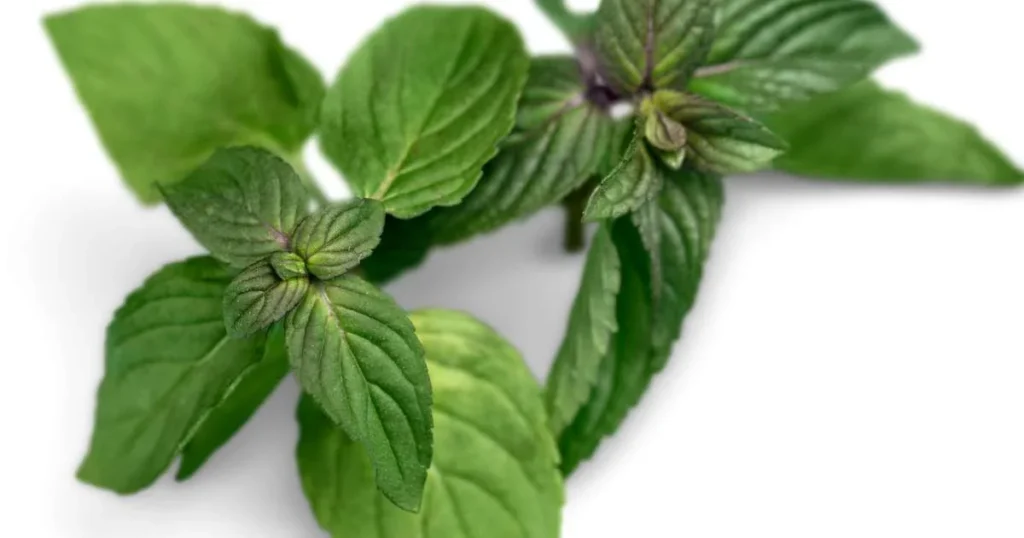
Description: Oregano is part of the mint family and provides an earthy, peppery flavor profile to dishes. It is a must-have for Italian, Greek, and Mexican cuisines and can be found in two main varieties, Greek and Mexican.
Growth and Harvest: Oregano is a slow grower, taking about 10 to 12 weeks before it can be harvested extensively.
Flavor and Aroma: Its strong flavor is a mix of sweet and bitter notes, almost astringent. The aroma is a warm and inviting mix of earthiness and floral notes.
Adaptability: Oregano prefers warmth and bright light. It’s a bit finicky and doesn’t like too much humidity.
Space Economy: Oregano can spread out, so consider having this as a standalone plant in a separate system.
Health Benefits: Oregano is packed with antioxidants, and its oil has anti-inflammatory properties, boosts the immune system, and might even have some anti-cancer properties.
8. Lemon Balm (Melissa officinalis)

Description: Lemon balm, as the name suggests, offers a lemony flavor and is part of the mint family. It has a long history of being used in herbal medicine and adds a refreshing zing to drinks and fish dishes.
Growth and Harvest: Lemon balm is a fast grower and can be harvested within 3 to 4 weeks. Frequent pinching back can encourage a bushier plant and more growth.
Flavor and Aroma: It has a sweet, lemony flavor and a clean, citrusy aroma.
Adaptability: Lemon balm is very adaptable and is not too fussy about conditions.
Space Economy: Lemon balm is a clumper, so give it a bit of space.
Health Benefits: Lemon balm is thought to have calming properties and has been used to reduce stress and anxiety. It’s also said to be a great fighter against cold sores.
9. Sage: Salvia officinalis
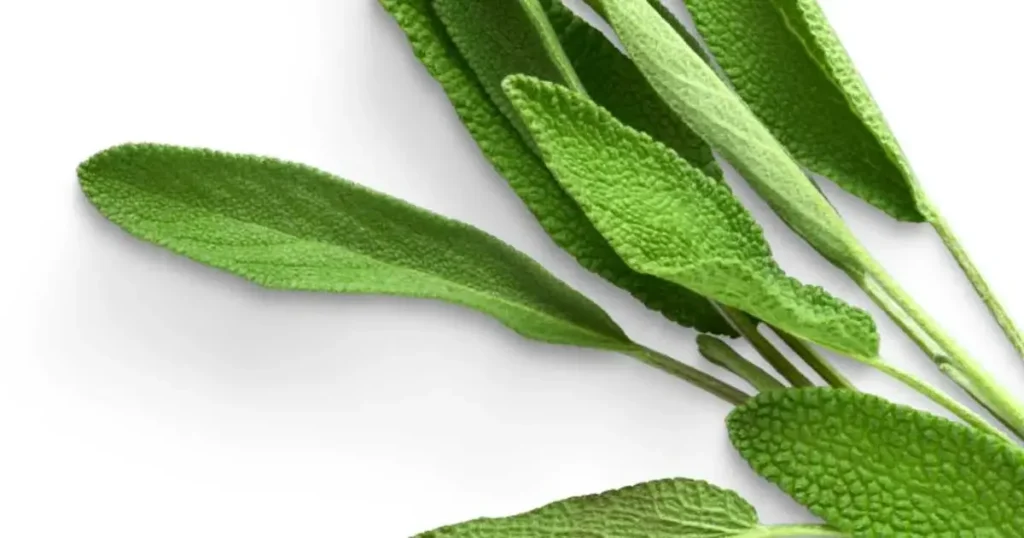
Description: Sage provides a robust, savory taste, and its long, oval green leaves can create a strong statement in both appearance and flavor in any dish. It’s a must for any serious cook, especially those fond of Thanksgiving flavors.
Growth and Harvest: Sage is a slow grower and can take about 12 weeks before a significant harvest can be made.
Flavor and Aroma: Its taste is a mix of sweet and peppery with a soft, slightly bitter undertone. The aroma is distinct and intense, one that screams of the holidays.
Adaptability: Sage prefers full sun and is not fond of overwatering. It’s also a bit finicky about humidity.
Space Economy: Sage requires a bit of space due to its size and upright growth habit.
Health Benefits: Sage is known for its cognitive benefits and is used to boost memory and focus. It’s also a powerful anti-inflammatory.
10. Rosemary: Rosmarinus officinalis
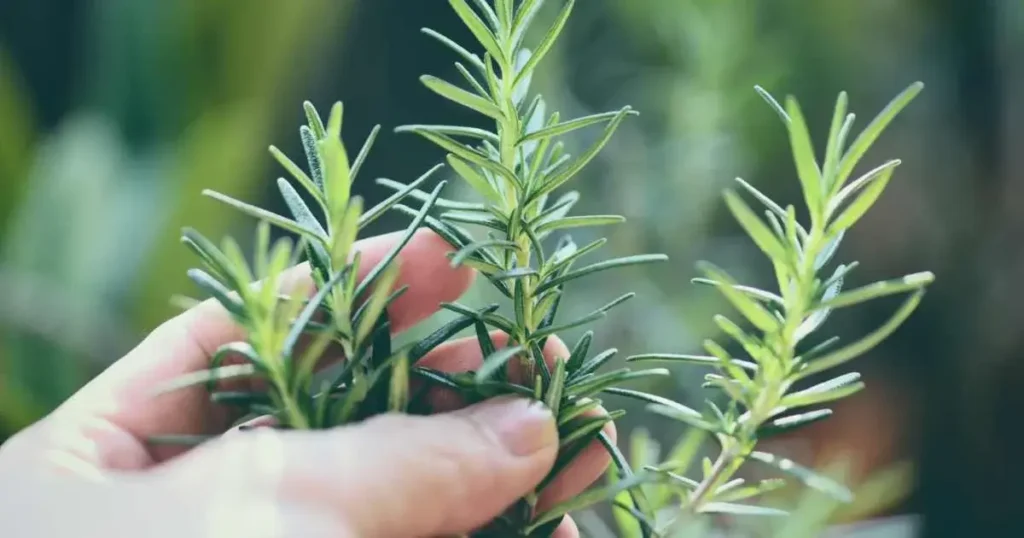
Description: Rosemary is an herb with a strong and unmistakable flavor that is an essential element in classic Mediterranean cuisine. With its needle-like leaves and woody stem, rosemary is as prized for its aesthetic qualities as for its culinary ones. It is highly versatile, flavoring dishes from soups to meats.
Growth and Harvest: Rosemary is a slow grower, and for a proper harvest, it can take about 12 to 16 weeks.
Flavor and Aroma: A robust, pine-like flavor gives way to a slightly bitter, astringent aftertaste. The aroma is warm and inviting, much like that of thyme but more intense.
Adaptability: Rosemary loves warmth and sunlight and is quite drought-tolerant.
Space Economy: Rosemary can grow quite large if not pruned regularly. Consider this when planning its space.
Health Benefits: Rosemary has compounds that are anti-carcinogenic, anti-inflammatory, and rich in antioxidants. It’s also great for skin health.
Conclusion
Hydroponic gardening opens possibilities for growing herbs without the limitations of traditional gardening methods. We have selected 10 best herbs for hydroponics for flavorsome additions to your favorite dishes.
Now you can turn your kitchen into a mini garden of herbs with fresh tastes and sweet aromas. Use one of these herbs, like basil for elevating your pasta flavor or a sprig of rosemary transforming a simple roast into a culinary delight. Explore other herbs in the list.

